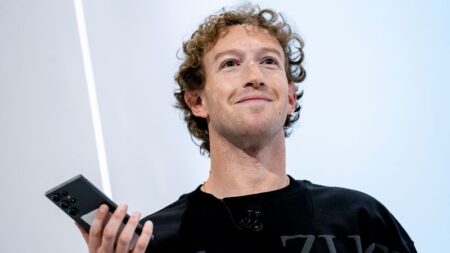The rise of kindness influencers in recent years has been notable, with individuals like Samuel Weidenhofer and Zachery Dereniowski harnessing social media to spread positivity through acts of charity. However, this phenomenon has sparked a paradoxical debate surrounding the authenticity of their intentions and the implications of their methods. While their content frequently garners massive viewership and support, they are often criticized for what some perceive as performative altruism—actions motivated more by the desire for online engagement and financial gain than by genuine kindness.
Samuel Weidenhofer’s story represents one of many that epitomize the modern kindness influencer trend. Overcoming a troubled childhood marked by mental health struggles, bullying, and the tragic loss of a loved one, Weidenhofer discovered solace in promoting kindness starting at age 17. His social media journey, which began with simple gestures like hugging strangers, has since evolved into a viral platform; as of now, he boasts 1.7 million Instagram followers. His videos often showcase him surprising individuals with gifts, including cash or celebrity visits—moments he hopes will inspire kindness in others.
In a similar vein, Zachery Dereniowski’s approach also attracts millions, often through unexpected acts of generosity depicted in his videos. Dereniowski, who began by offering free hugs to strangers, has successfully built a large following by focusing on interactions that highlight the innate stories of those he helps. Both Weidenhofer and Dereniowski illustrate how these gestures not only serve to entertain but also resonate on a deeper emotional level, appealing to viewers’ desires for positivity and connection in an otherwise chaotic online landscape.
The underlying appeal of kindness influencers lies in their ability to craft engaging narratives that seem genuine and heartfelt, as highlighted by Saoirse Cleary, a creative strategy director at a leading marketing agency. She points out that their content taps into social media algorithms, which favor emotional resonance and authentic storytelling. These factors have contributed to the widespread popularity of content that depicts real interactions with everyday individuals. However, this very success brings scrutiny, raising ethical questions about the influencers’ motivations and methodologies.
Critics argue that the financial rewards these influencers gain from their content can cloud their altruistic intentions. While the generosity displayed in their videos often appears sincere, its performative nature—where the act of giving is conducted in a way that is designed to be filmed and shared—raises concerns about whether the true objective is benevolence or monetization. Psychotherapist Hilda Burke expresses discomfort with the setup of these scenes, pointing out the potential psychological impact on participants who may feel compelled to prioritize the needs of others over their own, merely to facilitate an influencer’s narrative.
Despite the criticisms, some influencers, including Weidenhofer, defend their practices, emphasizing the effectiveness of social media in garnering support and funds for those in need. He posits that publicizing acts of kindness can maximize outreach and assistance. However, this raises ethical dilemmas regarding consent, as subjects in videos are often filmed without prior acknowledgment—an issue that some influencers are beginning to address.
Dereniowski offers a response to potential pitfalls associated with rapid financial contributions; after raising substantial amounts for individuals in distress, he recognizes the importance of supporting the long-term stability of recipients. His team has started integrating financial advisement and employment assistance, suggesting a pivot towards more sustainable forms of help.
In conclusion, kindness influencers straddle the line between altruism and entertainment. Though their initiatives may initially appear to spread joy and goodwill, they provoke a larger conversation about authenticity, ethical standards, and the complexities embedded in the altruism of the digital age. As audiences become increasingly aware of the performative nature of online acts of kindness, influencers must navigate the intricate balance between genuine generosity and the compelling narratives that drive their success.











